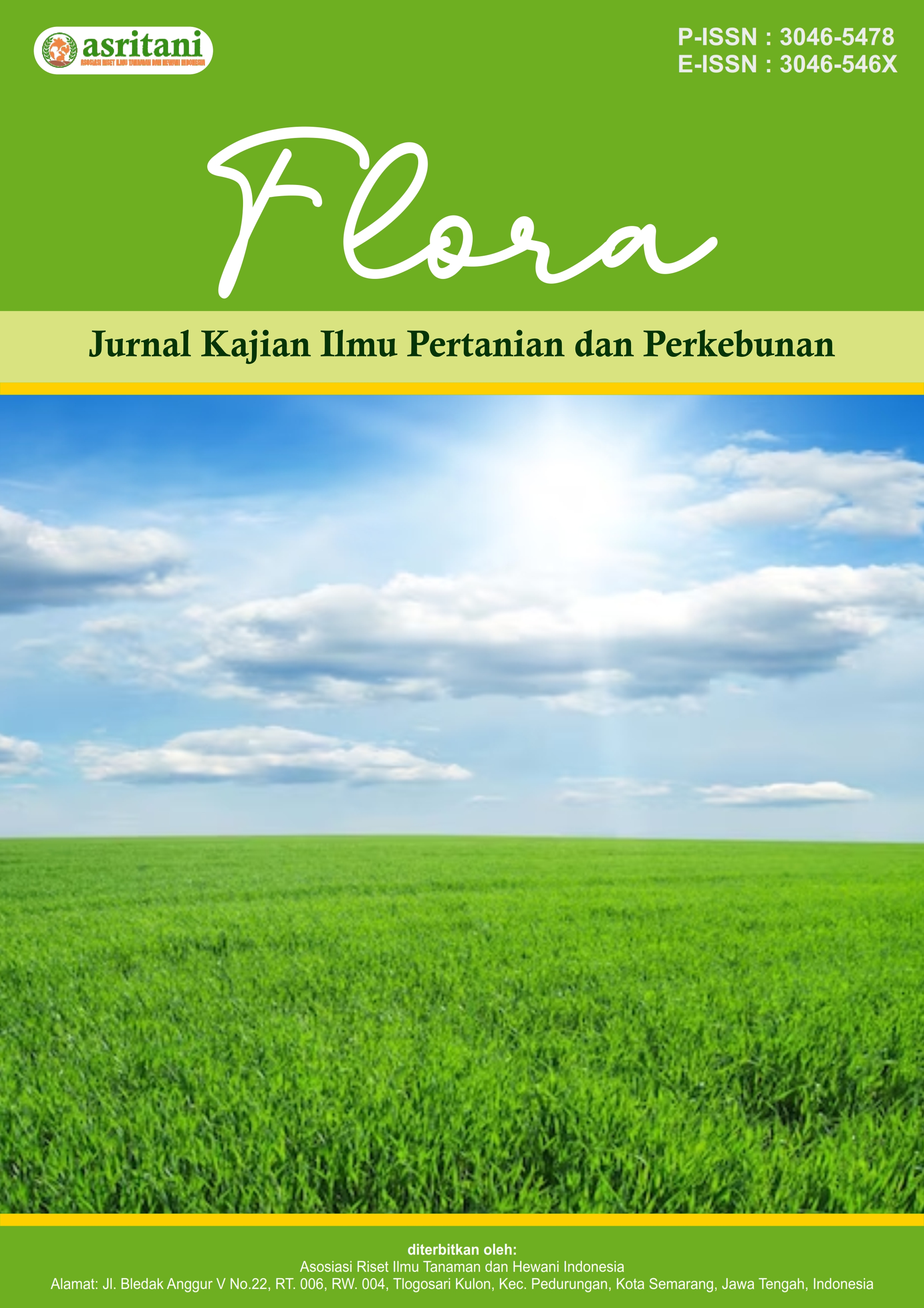Pengelolaan Sumber Daya Tumbuhan, Studi Kasus di Desa Jambusari
DOI:
https://doi.org/10.62951/flora.v2i1.214Keywords:
Ethnobotany, Local Wisdom, Plant Resource Management, Nginang, Traditional SmokingAbstract
This study aims to explore the local wisdom of the Jambusari Village community, Cilacap, in managing plant resources, especially the practice of chewing betel nut and smoking traditional plants. The research method used is a qualitative approach with a case study design, involving 44 respondents selected through snowball sampling techniques. The results of the study indicate that the habit of chewing betel nut and smoking is an integral part of the local culture that is passed down from generation to generation. As many as 75% of respondents came from families who had the habit, with the majority stating that they had not experienced any changes in this practice. Although there are benefits perceived from both habits, such as freshness and enjoyment, there are also reports of negative impacts on health. This study highlights the importance of preserving ethnobotanical knowledge as an effort to conserve local biological and cultural resources.
References
Arizona, D. (2011). Etnobotani dan potensi tumbuhan berguna di Taman Nasional Gunung Ciremai, Jawa Barat.
Bennett, B. C. (2005). Ethnobotany education, opportunities and needs in the U.S. Ethnobotany Research and Applications, 3, 113-121.
Fennell, C. W., Lindsey, K. L., McGaw, L. J., Sparg, S. G., Stafford, G. I., Elgorashi, E. E., & Van Staden, J. (2004). Assessing African medicinal plants for efficacy and safety: Pharmacological screening and toxicology. Journal of Ethnopharmacology, 94(2–3), 205–217.
Hakim, L. (2014). Etnobotani dan manajemen kebun pekarangan rumah: Ketahanan pangan, kesehatan dan agrowisata. Malang: Penerbit Selaras.
Kandari, S., et al. (2012). Pengetahuan lokal dalam pemanfaatan sumberdaya tumbuhan.
Kankara, S. S., Ibrahim, M. H., Mustafa, M., & Go, R. (2015). Ethnobotanical survey of medicinal plants used for traditional maternal healthcare in Katsina state, Nigeria. South African Journal of Botany, 97, 165-175.
Martin, G. J. (1995). Ethnobotany: A Methods Manual. Earthscan.
Naguib, N. Y. M. (2011). Organic vs chemical fertilization of medicinal plants: A concise review. Advances in Environmental Biology, 5(2), 394–400.
Nurhakim, M. A., Rindoan, A., & Yansyah, F. (2018). Etnobotani: Wujud konservasi oleh masyarakat Iban di Dusun Sadap. Putussibau: Balai Besar Taman Nasional Betung Kerihun dan Danau Sentarum.
Pandey, A. K., & Tripathi, Y. C. (2017). Ethnobotany and its relevance in contemporary research. Journal of Medicinal Plants Studies, 5(3), 123-129.
Purwanto, Y. (1999). Peran dan peluang etnobotani masa kini di Indonesia dalam menunjang upaya konservasi dan pengembangan keanekaragaman hayati. In Prosiding Seminar Hasil-hasil Penelitian Bidang Ilmu Hayat. Bogor: Pusat Antar Universitas Ilmu Hayat IPB.
Rahayu, S., Fadilah, R., Arifin, M., & Utami, D. (2019). Food security in Indonesia: Challenges and opportunities. Jurnal Ketahanan Pangan, 14(2), 89-98.
Raskin, I., Ribnicky, D. M., Komarnytsky, S., Ilic, N., Poulev, A., Borisjuk, N., & Fridlender, B. (2002). Plants and human health in the twenty-first century. Trends in Biotechnology, 20(12), 522–531.
Rist, S., & Dahdouh-Guebas, F. (2006). Ethnosciences—A step towards the integration of scientific and indigenous forms of knowledge in the management of natural resources for the future. Environmental Development and Sustainability, 8, 467-493.
Rodriguez-Fragoso, L., Reyes-Esparza, J., Burchiel, S. W., Herrera-Ruiz, D., & Torres, E. (2008). Risks and benefits of commonly used herbal medicines in Mexico. Toxicology and Applied Pharmacology, 227(1), 125–135.
Sari, R., & Wibowo, A. (2022). Generational transmission of ethnobotanical knowledge: Implications for conservation practices in Indonesia. Journal of Ethnobiology and Ethnomedicine, 18(1), 45.
Schultes, R. E. (1992). Ethnobotany and technology in the Northwest Amazon: A partnership. In B. H. Plotkin & L. Famolare (Eds.), Sustainable harvest and marketing of rainforest products (pp. 45-76). Island Press.
Sewell, R. D., & Rafieian-Kopaei, M. (2014). The history and ups and downs of herbal medicines usage. Journal of Herb Medicine Pharmacology, 3(1), 1-3.
Simmonds, M. S. J. (2009). Opportunities and challenges for ethnobotany at the start of the twenty-first century. In A. E. Osbourn & V. Lanzotti (Eds.), Plant-Derived Natural Products (pp. 127-140). Springer.
Suryadarma, I. G. P. (2008). Diktat kuliah etnobotani. Yogyakarta: Jurusan Pendidikan Biologi FMIPA, Universitas Negeri Yogyakarta.
Yuan, H., Ma, Q., Ye, L., & Piao, G. (2016). The traditional medicine and modern medicine from natural products. Molecules, 21(5), 559.
Downloads
Published
How to Cite
Issue
Section
License
Copyright (c) 2025 Flora : Jurnal Kajian Ilmu Pertanian dan Perkebunan

This work is licensed under a Creative Commons Attribution-ShareAlike 4.0 International License.





